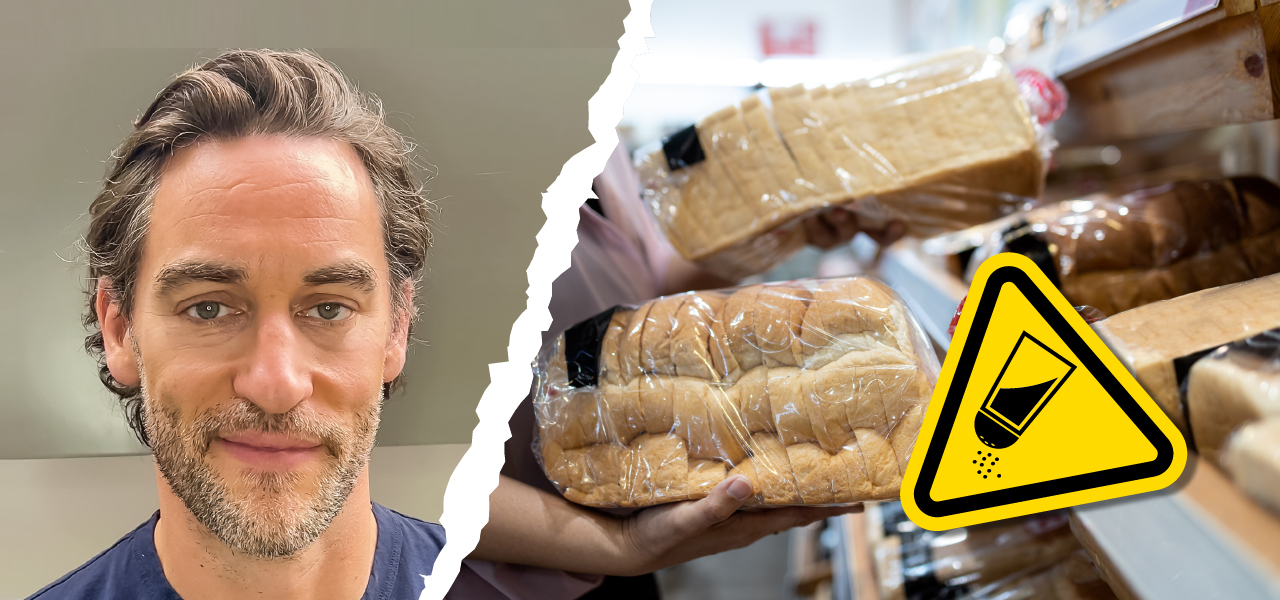17 May 2023

Why you may be eating more salt than you think and top tips for reducing intake
Salt comprises sodium and chloride elements and is commonly used to season and preserve food. Sodium is essential for the body to function correctly and comes from the foods we include in our diet.
Still, in large quantities, it can harm your health. Excessive sodium intake can increase your risk of high blood pressure, a risk factor for heart disease and stroke.
In the UK, salt intakes are above the recommended 6g per day, with most people consuming more than 8g daily. It’s important to try and reduce your daily salt intake to no more than 6g daily and there are many ways you can do this. Here are some tips to help you reduce your salt intake.
Always check the label
All food and drink products are nutritionally labelled, and this includes salt. Choose green or amber traffic light colours and look for ‘low in salt’ nutrition claims to help you choose healthy food. If you are looking at the ingredients list, be aware of the many guises salt can take, including sodium chloride, monosodium glutamate and even baking soda.
Flavour with herbs and spices
Instead of reaching for salt to flavour your food, choose fresh and dried herbs and spices. Experiment with lots of different flavour combinations and remember to explore ready-prepared spice blends that contain no salt. Fresh herbs and spices can be added to any dish. Start with just a few and keep them to hand so you remember to use them.
Prepare your meals from scratch
When you prepare your meals from scratch, you have much more control over how much salt is added to the recipe. Choose low-sodium stock cubes, broths, and other flavour enhancers like LoSalt. Foods such as mushrooms and tomato puree have a lot of umami, giving your meal a rich, savoury flavour. Specific cooking techniques like roasting and stewing can help improve the richness of flavour without adding extra salt to your dish.
Limit your intake of processed foods
Processed foods are often high in salt as it is used as a preservative. These foods include canned and prepacked items such as ready-made meals, sauces, and dressings. Try switching to frozen varieties over canned and make your own sauces and dressings.
Make low-salt choices when eating out
This is a tricky one as in many restaurants the food is heavily flavoured. You could choose a selection of starter dishes or order your meals with dressings and sauces on the side so you can decide how much to add to your food. You may also want to avoid cuisines notoriously high in salt, such as Indian and Chinese.
Rinse canned foods
Foods that are preserved in brine can be rinsed after draining. This method of preparation is thought to reduce the food’s sodium content by more than a third.
Be aware of hidden salt in food
Most of the salt people consume is hidden in foods; in some cases, the biggest culprits are not what you might expect. Foods include bread, breakfast cereal, sweet snacks such as biscuits, ‘ healthy’ salad dressings, sauces, and soups. Even foods that do not taste particularly salty, such as cottage cheese, could still be high in salt.
Take your time to cut down on salt
Reducing salt in your diet may be challenging, especially if you eat a lot. Gradually reducing your salt intake will help you become accustomed to the taste, lessening your chances of giving up. Your taste buds will become used to the taste of foods without salt within a few weeks.
Try to increase your intake of potassium-rich foods
This essential mineral can help to counterbalance the adverse effects of overeating salt. In the UK, average intakes of potassium are lower than the recommended intake and a lack of vegetables in the diet contributes to this. Foods high in potassium include bananas, avocados, legumes, spinach, broccoli, dried fruits, and yoghurt.
Reducing your salt intake is a key step to improving your health and taking small achievable steps is the best way to achieve long term results.
